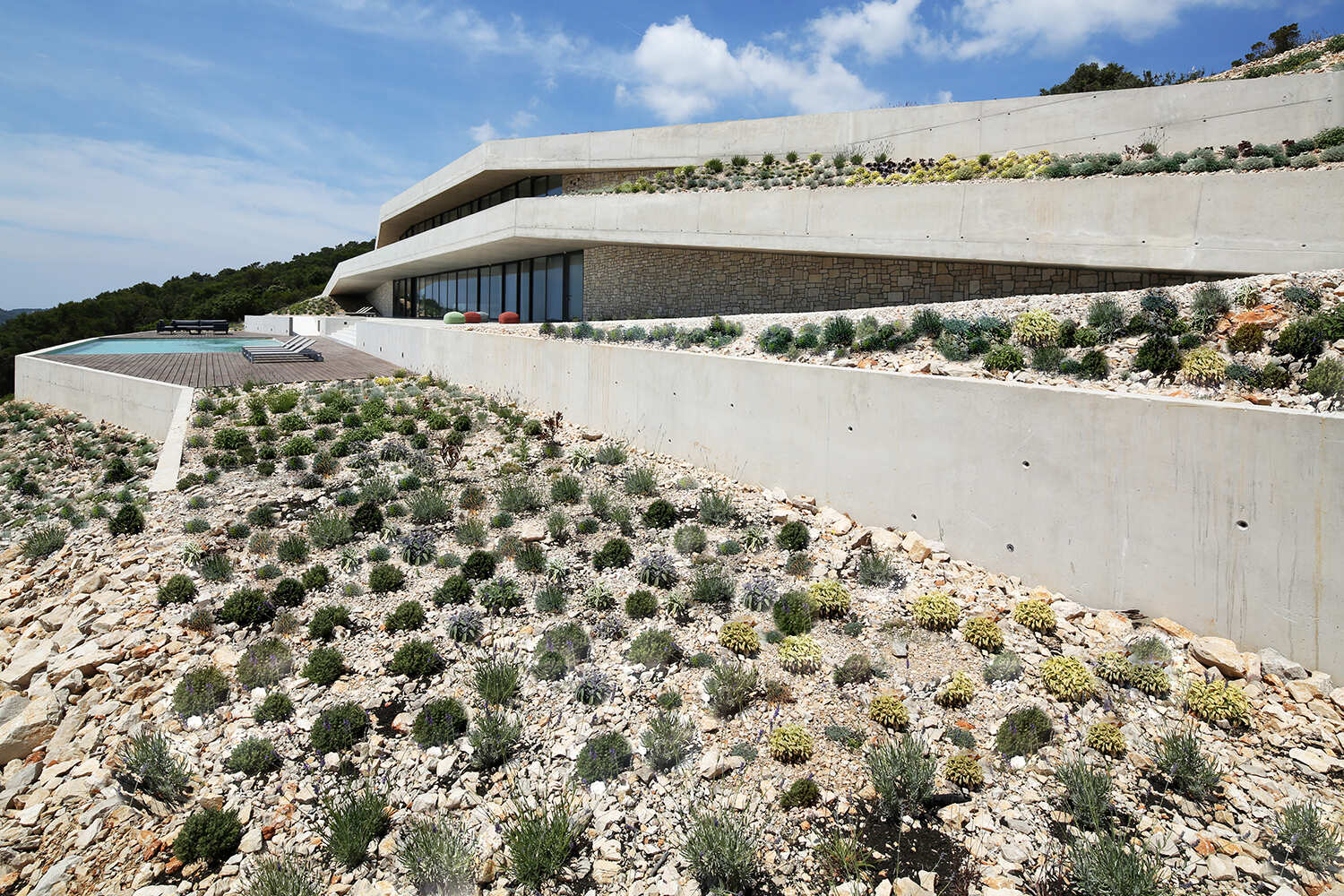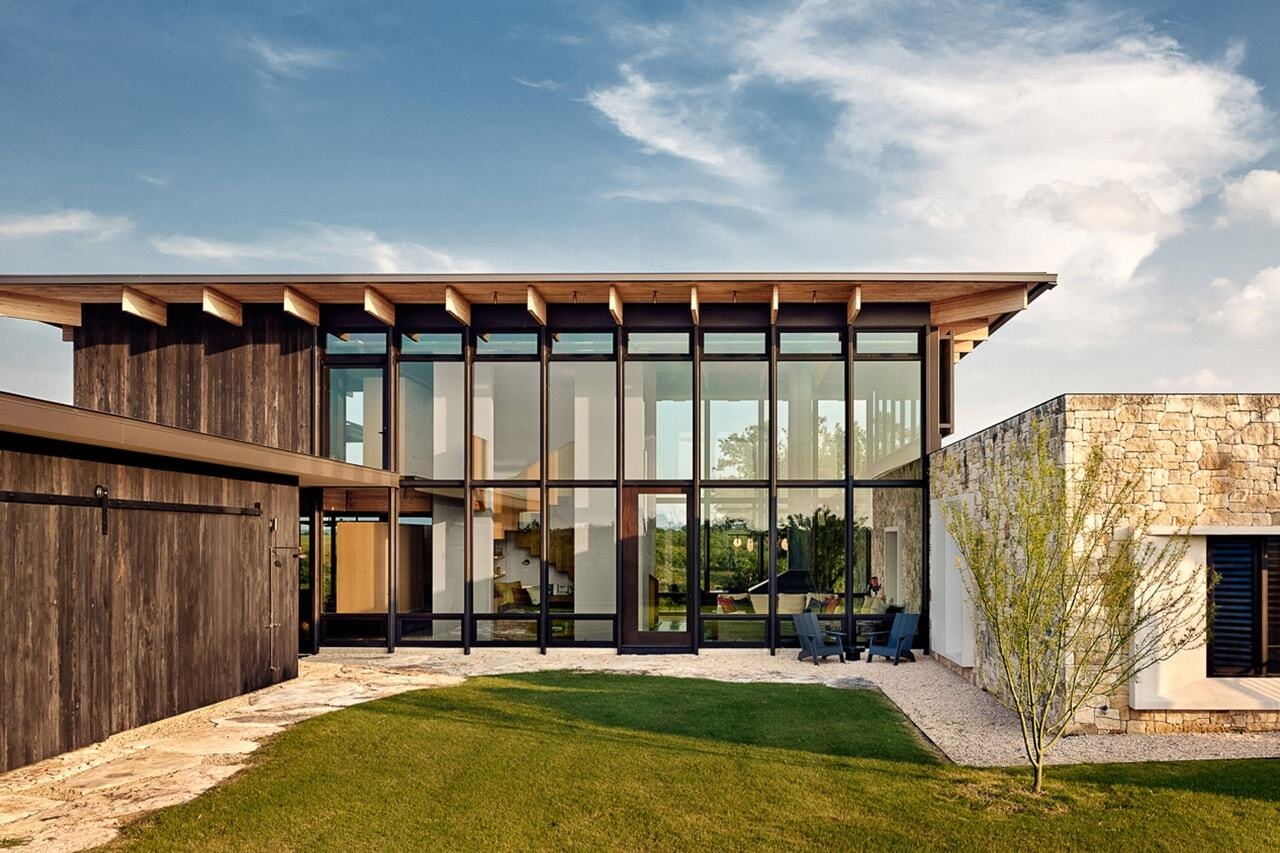Massive speakers and swimming pool in front of mid-century library feature at Exhibit Columbus


A massive sound system with a publicly accessible Bluetooth connection and a sculpture built from industrial scraps feature among the installations at Exhibit Columbus in Indiana, USA.
The biennial festival returned this year for its fifth cycle with a series of architectural pavilions arranged around the historical centre of the small Indiana city. Known for its mid-century modern architecture, Columbus was built under the patronage of local businessman J Irwin Miller and includes churches by Finnish architect Eliel Saarinen and American architect Myron Goldsmith.

Exhibit Columbus is facilitated by preservation group Landmark Columbus Foundation, and many of the installations, funded by a series of grants, are placed directly on the Avenue of the Architects, a main thoroughfare in the city with a concentration of mid-century modern works.
This year's theme was Yes And – a nod to the improvisational nature of the architectural pavilion.

Several of the installations were in direct dialogue with the city's modernist buildings. Perhaps the most striking was an installation called Pool/Side by designer and educator Akima Brackeen, who placed a purple-coloured pool outside of a library designed by Chinese-American architect IM Pei.
The pool, which was meant to "reclaim" the reflection pool typology and reactivate the plaza in front of the library, was fully operational – children swam in the pool during the opening night of the festival.

Next to the pool was Inside Out by educators Chandler Ahrens, Constance Vale and Kelley Van Dyck Murphy of Washington University in St Louis, which featured a large cuboid shape with famous interior dioramas carved into its faces.
Both Inside Out and Pool/Side were funded by University Design Research Fellowship, dispensed after an open call the architects and designers in the university systems.
Elsewhere, New York-based Studio Cooke John created Lift in the sunken courtyard at Eliel Saarinen's First Christian Church. The installation featured metal poles installed to the ground in a grid that mirrored the clean lines of the church, with hammocks hung at places to create an upgraded social space.

Studio Cooke John received one of the Miller Prize grants, the highest dispensation for the exhibition, as did Chicago-based Studio Barnes, which installed a massive sound system on top of a parking garage.
Called Joy Riding, the sound system was designed with reference to speakers installed in cars and features a publicly accessible Bluetooth connection and an array of speaker-shaped benches.

Another Miller Prize recipient was an installation called Ellipsis by New York-based architecture studio AD—WO.
Built on the site of a Victorian-style building that burnt down in 2022, the installation comprised a large shade structure with a bamboo canopy that, according to the studio, "subtly and symbolically excavates omitted Black and Indigenous histories".
The installation was surrounded by native planting and provided functional shade for visitors who could be seen sheltering themselves from the oppressive Indiana sun during the opening weekend.

A final Miller Prize was dispensed to Chicago-based studio Adaptive Operations for Accessing Nostalgia, a massive metal pavilion placed next to the 136-year-old Crump Theatre, which is currently undergoing renovations.
This pavilion featured an elevated platform and a series of construction materials configured to create a social space that allowed viewing of the exposed facade of the theatre, showing the different aspects of its ongoing structural existence.

Another standout installation was presented by a team of researchers from New Jersey Institute of Technology.
This team created The Steel Horsie, where a railway line once crossed the city. Created from industrial materials gleaned from the surrounding area, the geometric metal pavilion was designed to symbolically connect the different industries, from horse stables to railways and Amazon distribution facilities that characterise the area.
Other installations were created by teams from Cornell University School of Architecture; a collaborative team between César Lopez, Jess Myers, Amelyn Ng and Germán Pallares‐Avitia; and two groups from local secondary schools and universities.
All of the signage and graphic material for the exhibition was created by LA-based design studio Sing-Sing.
While the local community seemed to embrace most of the goings-on, with more than 300 local and out-of-town guests embarking on a walking tour on opening weekend, one installation by designer and educator Sarah Aziz was deinstalled after pushback.

Some of the installations from Exhibit Columbus 2023 remain in the city, including a pavilion over an intersection by New York architecture studio PAU. The remainder of the installations will remain up through the fall.
The photography is by Hadley Fruits.
Exhibit Columbus will be on view until 30 November 2025. For more events, exhibitions, and talks in architecture and design visit Dezeen Events Guide.
The post Massive speakers and swimming pool in front of mid-century library feature at Exhibit Columbus appeared first on Dezeen.


















































